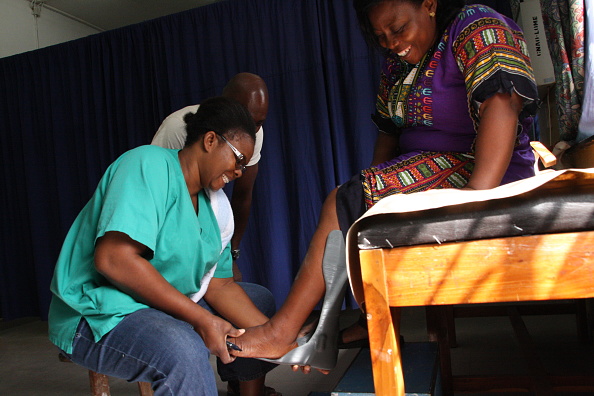3D printing is going mainstream, and is the future of mass production, manufacturing anything from plastic to human organs to aircraft and spaceships.
We often look at digitization through the lens of how it will transform industries, economies and governments but lose sight of the impact it will have on people. The manufacturing process is no longer what it was. With exponential technologies, we’re moving from analogue to digital, and as digital becomes more dominant, what is now referred to as the Fourth Industrial Revolution is, in fact, a human revolution.
“With this next industrial revolution, what we have is the opportunity to have something that involves data, involves a connectedness, and as a result of that, has profound implications in terms of a true ability to participate globally in the new economy, explains Scott Schiller, HP Inc.’s Global Head of Customer and Market Development.

Scott Schiller, HP Inc.’s Global Head of Customer and Market Development. Picture: Supplied
“It comes down to personalization, localization, customization… and all of these things change the way we interact. There’s a lot of benefits, but they’re, in the end, they’re really a human benefit.”
A common misconception with 3D printing links to commercial, desktop printers that create once-off objects. The consumer 3D printing process is exciting, but tedious. Looking at next-generation manufacturing, mass industrial 3D printing is about building complex components or objects with internal structures that would be difficult, if not impossible, to replicate without a 3D printer.
NASA is testing the use of 3D-printed parts for its spaceship engines. Lonmin, a British producer of platinum group metals operating in South Africa, is using platinum powder to 3D print jewelry. Then, there’s Aeroswift, the largest 3D printer on the African continent, which can build 3D titanium aircraft parts with metal powder.
3D printing is going mainstream. It’s revolutionizing design, accelerating process-driven manufacturing across every industry and the accrued benefits are impacting society and the healthcare sector at scale.
Globally, and working closely with the World Economic Forum, HP has built a mutually-beneficial ecosystem around their Multi Jet Fusion technology and materials producers. From 3D-printed orthotics, which can be personalized to change the mechanics of how a person walks, to 3D-printed prosthetics, medical modeling is not new – it’s been around since the late 1980s (and if anything, the healthcare sector is where 3D printing first took off, thanks to the hearing aid market).
The key differentiator in digital manufacturing is mass production.
“Improved scanning technologies means the ability to get things exactly right, rather than roughly right, brings new possibilities.” says Schiller, adding that Invisalign Teeth Straightening uses a 3D-printed mould.
Nneile Nkholise is the Managing Director of iMed Tech, a company headquartered in Johannesburg that specializes in medical prosthesis design and manufacturing.

“The most important areas of improvement in 3D printing is not in the technology per se, but in the application of the technology to create meaningful impact,” explains Nkholise.
“I truly believe that as a continent, we need to adopt the impact of 3D printing in achieving economic growth, particularly in healthcare, where the benefits of the technology are proven to create a positive shift in how we provide quality healthcare for every person on the continent – through products such as costing made prosthesis, bio implants and surgical planning models.”
3D printing is an integral part of what iMed Tech does, and it is used for both the creation of physical products as well as the development of prototypes.
“There is a backlog of medical products, such as prosthesis, which we have a high need for, particularly in a continent like Africa where there is a high number of people damaging or losing valuable body features due to traumatic accidents or diseases such as diabetes, which contributes to a lot of people losing limbs from lower-limb amputation. We are a human population that is experiencing a high rise in non-communicable diseases, which are resulting in physical damage to body features – the rise in breast cancer is one such disease,” says Nkholise.
“iMed Tech has recently been involved in optimizing digital 3D design and printing through the online platform for creating 3D surgical planning models to help surgeons reduce time for planning for surgeries, achieve accuracy and better respond to patient care.”
Digital technologies are reshaping the manufacturing landscape. They allow people living in remote or under-developed areas to become an integral part of the new global digital manufacturing system.
